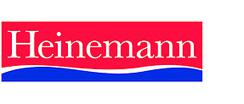- View more resources from this publisher
 University of York Science Education Group (UYSEG)
University of York Science Education Group (UYSEG)
Making Use of Oil *suitable for home teaching*
A Year 11 module from the Salters’ Key Stage Four double award science course. This module deals with the location, extraction and processing of oil, the way in which supply of different oil fractions is balanced against demand and the issues related to conservation of supplies for the future. The unit also considers the differences between inter- and intra-molecular forces and the structure and properties of both alkanes and alkenes. The formation and properties of polymers are also studied.
The module is introduced by a survey of everyday items made from oil-based chemicals. A text exercise shows the history of formation of oil deposits, leading to discussion of rock formations capable of trapping oil. Students construct a 3-D model of underground strata, based on evidence from drill-core samples. The scientific, commercial and social implications of oil exploitation are considered.
Fractional distillation of crude oil is demonstrated. Students test some properties of the different fractions and relate them to inter-molecular forces. Paraffin or candle wax is burned and the products collected to give evidence about the elements present. Molecular models of simple alkanes are made. Students consider sources of methane, leading to ideas about bio-fuels.
Models illustrate the idea of cracking hydrocarbon molecules to balance supply and demand for different products. Students carry out a bromine water test for unsaturation in alkenes. Text activities bring out the relationship between monomers and polymers. Costs of recycling are considered as part of efforts to preserve supplies as long as possible.
Section 1: Finding and using oil
The module is introduced by a survey of everyday items made from oil-based chemicals. A text exercise shows the history of formation of oil deposits, leading to discussion of rock formations capable of trapping oil. Students construct a 3-D model of underground strata, based on evidence from drill-core samples. The scientific, commercial and social implications of oil exploitation are considered.
Section 2: Oil is a mixture of chemicals
Fractional distillation of crude oil is demonstrated. Students test some properties of the different fractions and relate them to inter-molecular forces. Paraffin or candle wax is burned and the products collected to give evidence about the elements present. Molecular models of simple alkanes are made. Students consider sources of methane, leading to ideas about bio-fuels.
Section 3: Molecules made to measure
Models illustrate the idea of cracking hydrocarbon molecules to balance supply and demand for different products. Students carry out a bromine water test for unsaturation. Text activities bring out the relationship between monomers and polymers. Costs of recycling are considered as part of efforts to preserve supplies as long as possible.
Show health and safety information
Please be aware that resources have been published on the website in the form that they were originally supplied. This means that procedures reflect general practice and standards applicable at the time resources were produced and cannot be assumed to be acceptable today. Website users are fully responsible for ensuring that any activity, including practical work, which they carry out is in accordance with current regulations related to health and safety and that an appropriate risk assessment has been carried out.
Downloads
-
Making use of oil 7.38 MB





